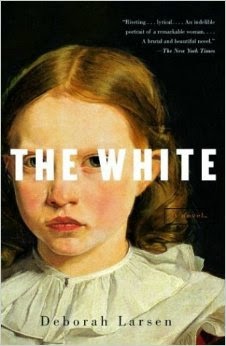Summary:
"I
was born a white at sea on the way to the New World . . . But I was taken by
those whom we called Indians. Nearly speechless for a time, I was beset by
terrors." This is the voice of Mary Jemison, who, in 1758, at the age of
sixteen, was taken by a Shawnee raiding party from her home near what would become
Gettysburg, Pennsylvania. In this intimate reimagining of her life story, Mary
endures the brutal scalpings of her parents and siblings and is given to two
Seneca sisters who treat her as their own--a symbolic replacement for the
brother they lost to the white colonists. Renamed Two-Falling-Voices, she
gradually becomes integrated into her new family, learning to assist with the
hunt and to cultivate corn. She marries a Delaware warrior, raises a family in
her adoptive culture, becomes friends with two former slaves, and eventually,
remarkably, fulfills her lifelong dream "to own land bordered by sky, as
my mother and father had once purchased woods and fields which were dappled
with changing light." A testament to the resilience of the human mind and
spirit, The White is a cut-crystal narrative of Mary's life among the Seneca,
lit by flashes of her own voice and revealing her curious, open heart. From the
novel's bloody opening to its arresting conclusion--by her own choice Mary does
not return to white society--Deborah Larsen never flinches from the violence
and the splendor that marked the settling of the New World.
(From
mfpl.org)
There have been a plethora of books written
about the young colonial woman, Mary Jemison, who was violently ripped from her
family and home near present day Gettysburg, Pennsylvania. In The White, Deborah Larsen gives a raw
and at times violently graphic account of the events leading up to and after
her capture. Mary’s story is a tale so frightening, that one could easily
assume that it holds no basis in truth, but that would be a rather large
mistake. At the tender age of 16 and terrified beyond belief, Mary must witness
the brutal slaying of her family and neighbors, only to be forced to live among
the very people who committed these heinous acts. Rendered unable to speak due
to the sheer terror of her circumstances, Mary is given to two grieving Seneca
tribeswomen who use her as the physical replacement of a brother lost during a
skirmish with the white colonists. They give her the name Two-Falling Voices. This
seems to represent not only the fallen voice of the brother she is to replace,
but also the lost “voice” of Mary herself. Over time, Mary becomes more than
accustom to the native ways, marrying a Delaware tribesman, and raising a
family within his native culture. Many years later, when given the chance to
leave the tribe, Mary makes the unexpected choice to stay; finding her new way
of life actually suited her in a more spiritual way than that of the white
colonists.
I chose this book by happenstance. I was shelving
books one day at the library and came across it quite by mistake. I saw a
small, simple book with the bold title “The White” written very plainly along
the spine. This immediately piqued my interest. Where was the flashy script
writing with the fancy, artistic curlicues that so typically adorn the cover of
fiction novels? I grabbed it from the
shelf, and decided to take a peek at it during my lunch break. Boy was I pleasantly surprised! My initial
reaction to the writing was one of admiration. Deborah Larsen wrote this novel
with a subtle, yet lyrically expressive voice. Her descriptions of the colors
that surround Mary in the natural settings that have become her home are mentally
exhilarating. I could easily visualize
Mary and her warrior husband frolicking among the golden fields of corn and
amber hues of the autumn leaves. Although at times her descriptiveness was unnecessary
to the scene, and seemed like fluff, it was rather attractive fluff and exceptionally
enjoyable to read and visualize.
Review:
Once
you wade through the cream of Larsen’s eloquent and elaborate writing style,
Mary’s narrative takes on a life of its own that transcends her contemporary
time period. It can be translated into various modern scenarios, which makes
her tale endearing and relatable. To the modern day reader, Mary is remarkably
strong-willed and free-thinking for a woman of her time. She comes across as a
person who is dealt an undeserved hand, and finds a way to make the best of her
situation. She shows tolerance and compassion in the face of complete and utter
despondency, not only in her dealings with the native people, but also her
treatment of the former slaves she befriends. Hers is a true life saga that
expresses wholeheartedly the internal fortitude and grit necessary to overcome
any obstacle, and shows that even in the direst situations, hope can spring
eternal. I give this book three and a half stars.





No comments:
Post a Comment